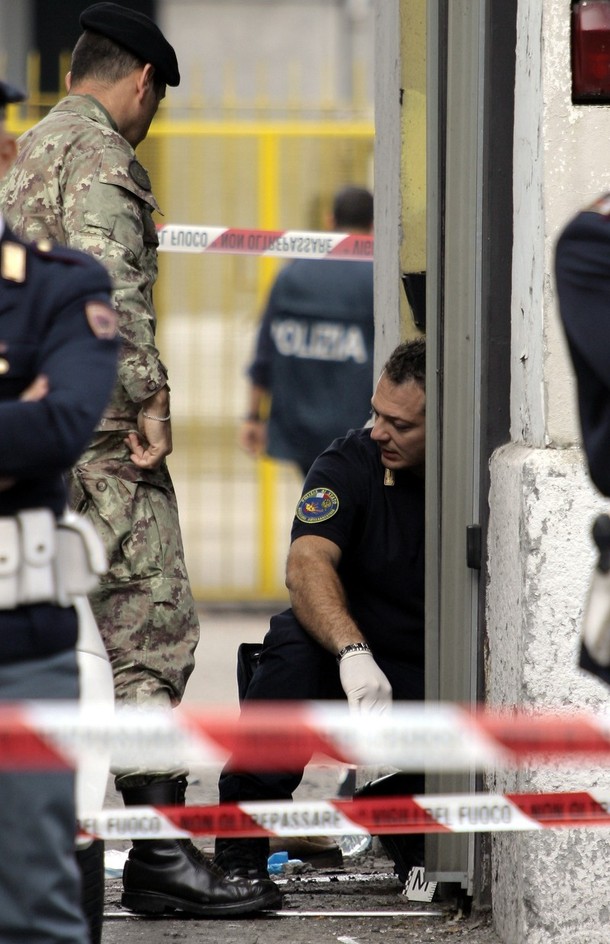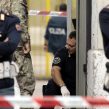
A Shift in Terrorist Strategy Threatens Italian National Security
Publication: Terrorism Monitor Volume: 7 Issue: 35
By:

The Italian Home Minister, Roberto Maroni, recently stated: “We believe that terrorist cells fundraise and train to carry out attacks in our country. It is not yet a homegrown terrorist situation, like in the United Kingdom and in Spain, but we are getting closer to it” (Corriere della Sera, November 6). Maroni added that the October attack against a military installment in Milan represented a major turning point for Italy. “The situation is changed. There is a concerning evolution in our country after the [bombing in] Milan. It represents a change in the presence of these activities in Italy.” Maroni is referring to the October 12 attack carried out against the Santa Barbara Carabinieri barracks in Milan by a Libyan militant, 34-year-old Muhammad Game (ANSA, October 12). The bomb used for the attack was made of five kilos of ammonium nitrate but only one kilo detonated because of the improper preparation of the bomb (Corriere della Sera, October 14). While a Carabinieri corporal was injured in the blast, the Libyan attacker was the only one seriously injured, losing use of a hand, a forearm and an eye. Shortly after the attack, Italian authorities denied that the man was part of a wider terrorist network but the overall situation remained unclear (La Repubblica, October 12).
After several days of investigation, it was revealed that the man did not act on his own but had two accomplices, Egyptian Abdel Hady Abdelaziz Mahmud Kol and Libyan Muhammad Imbaeya Israfel. They have since been arrested. It seems that the three men were connected to a radical group whose main base is in Egypt but this has not been officially confirmed. In Israfel’s apartment police uncovered a chemical arsenal, some mobile phones and a timer. Moreover, the police found the identity documents of other persons likely connected to the group. It could mean that the cell had a wide membership and was not a small, isolated group as previously claimed (La Repubblica, October 16). A previous attempt to create a terrorist cell was foiled in December, 2008 when two Moroccan men, Rachid Ilhami and Gafir Abdelkader, were arrested on charges of trying to recruit militants to carry out terrorist attacks in Italy (Sole 24 ore, December 2, 2008).
Further investigations by security services revealed Game had compiled detailed dossiers on the habits and homes of some 15 leading politicians, including Interior Minister Roberto Maroni, Defense Minister Ignazio La Russa, and Minister Without Portfolio Roberto Calderoli, a Northern League politician known for his provocative anti-Islamic behavior. Most of the information was taken from the internet, using applications such as Google Maps and Google Video (AKI, November 13).
The Islamist panorama in Italy is characterized by the presence of small and fluid extremist circuits, often led by charismatic leaders with previous experience in militant activities. These leaders are able to radicalize and co-opt young Muslims, above all in northern Italy, where the presence of Islamic communities is wider. Indeed, the region in which the risks are highest is the northern region of Lombardy with its capital city of Milan, due to the presence there of substantial Islamic communities.
Prisons play a major role in the recruitment of cell members by providing a suitable place for indoctrination and propaganda activities, particularly among prisoners from North Africa. [1] The main basin of recruitment consists of those individuals frustrated and alienated by their inability to integrate into their new territorial and cultural reality. Historically, Italy has been more of a logistical base for Islamist terrorism rather than a direct target for attacks. The main activities of these groups until now were related largely to fundraising, recruitment and the acquisition of documents for the militants.
Such groups have had some relations with Italian organized crime groups, as demonstrated in an investigation of the general judiciary court of Naples in 2005 (La Repubblica, July 13, 2005). However, the latest developments have shown that some changes have occurred relative to previous patterns of militant activity. The militants involved in this attack were not jihadists with previous “epic” experiences in the most important fields of global jihad, like Iraq and Afghanistan. Moreover, they were not officially part of any organized group. These characteristics could make the fight against these groups even harder. Confronting small and disconnected groups could have both advantages and disadvantages. The groups are weaker in the absence of a wider organization and proper resources, but, at the same time, it is harder to control them due to the lack of continuity and solid traces to follow in an investigation. Moreover, the risk of emulation could represent another possible outcome of such “homegrown” attacks. These attacks appear to show that it is relatively easy to carry out a jihad operation, even though a larger network may be at work behind the scenes.
Even if an attack is not successful, its public resonance can be an aim unto itself. The latest developments seem to show that Italy is no longer perceived as only a logistical platform for jihadist activities, but is now regarded as an eligible target for terrorist attacks. Such a shift could have a strong impact on Italy’s anti-terrorism measures and the immigration policies of the government. For example, the powerful Northern League (Lega Nord per l’Indipendenza della Padania – North League for the Independence of Padania) political coalition has already proposed a tougher law to control immigration fluxes after the recent attack.
More than 13,000 potential targets for terrorist actions are continuously monitored by security services in Italy (AKI, August 14, 2006). A further specific dimension of risk is represented by the wide presence of notable Christian churches and historical monuments, any of which could present a suitable symbolic target for terrorists (see Terrorism Monitor, September 21, 2005). The October attack, however, differs from many other terrorist attacks carried out in Europe in the past few years because of its specific goal. Normally, terrorist attacks are aimed to frighten common people through attacking the vital infrastructure of modern life, such as public transportation systems. Instead, the target of this attack was a military installation (though the Carabinieri paramilitary has law enforcement functions, it is part of the Italian armed forces). The other seven targets the group intended to hit were also military facilities. Investigators said that the reason behind this choice was to create a popular consensus against the Italian military presence in Afghanistan (La Repubblica, October 14, 2009). Therefore, this attack had a specific political aim and the choice of the target was functional to it. The militants wanted to show, through attacking the military, that they were committed not to attacking the Italian people indiscriminately, but only the protagonists of the Italian role in Afghanistan. The choice of target was related to the specific priorities of this small and, apparently isolated group.
As noted by the Italian Home Minister (a member of the anti-immigration Northern League), the terrorist risk in Italy is rising. The October attack, even if it was unsuccessful, showed that it is relatively easy to prepare and organize an attack. A small group organized it, even if it is likely that it was part of a larger network of terrorists. It demonstrated that small cells active on Italian soil are able to organize and carry out attacks. This time the target was a military barracks, since the specific political purpose of the group was to influence Italian public opinion to force the government to withdraw the troops from Afghanistan. It was only unsuccessful because of the improper preparation of the bomb. However, it demonstrates that Italy is no longer just a logistical platform for these groups but instead represents a target in itself.
Notes:
1. Relazione annuale del Sistema di Informazione per la sicurezza della Repubblica, Information System for the Security of the Republic – Italian Intelligence Service, 2008, https://www.sicurezzanazionale.gov.it/web.nsf/pagine/home .





